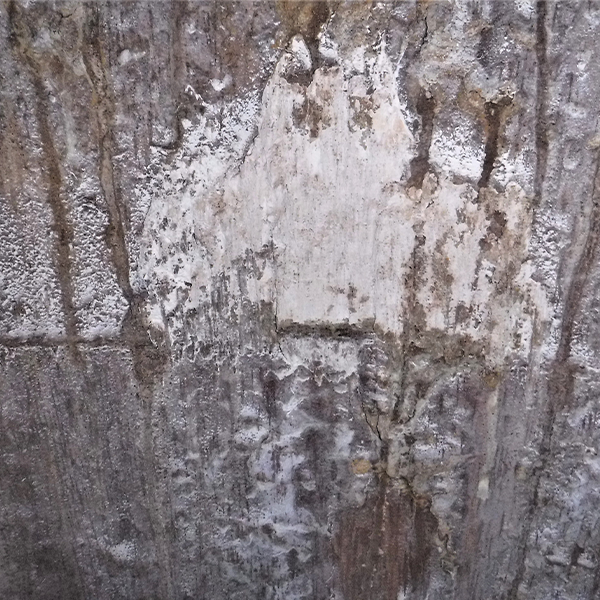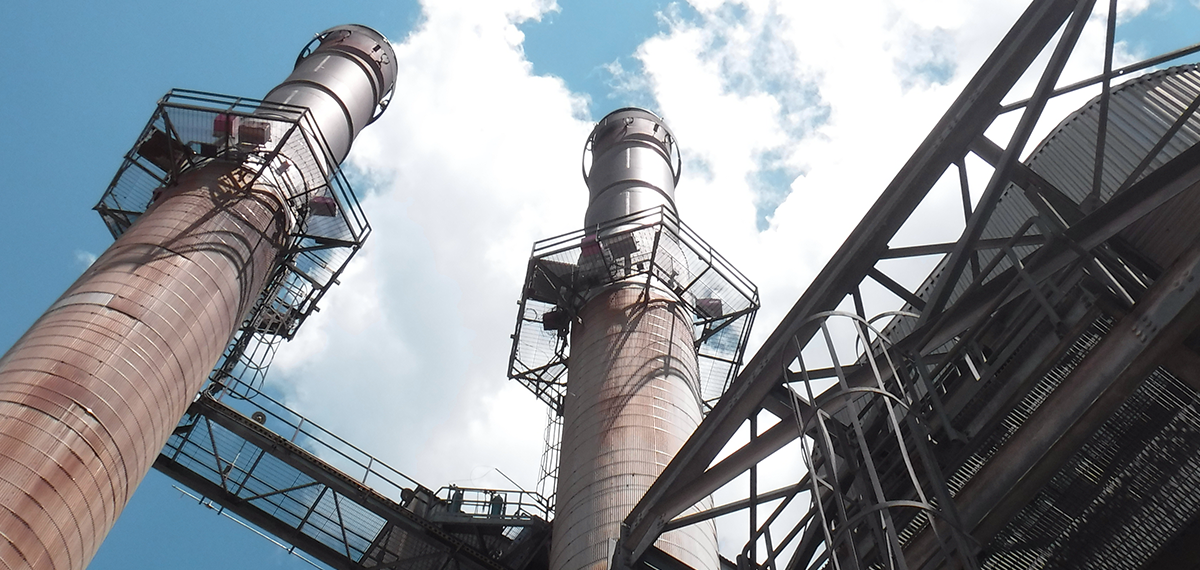IA crew reviewed any pertinent documents, took photographs of observed anomalies, recorded UT readings, and examined the interior and exterior of both stacks as well as associated structural systems and appurtenances. It was concluded that both recovery boilers appeared to be mechanically functional and performing as intended, with structural integrity in fair conditions. Nonetheless, there were still different levels of degradation observed and reported for both recovery boilers.
Some stack exterior condition concerns included signs of corrosion on steel plate and rings, some broken bands, holes, exposed insulation, and failing caulk seals around penetrations. The circumferential platforms have oxidation stains present on their components and ladders, existing grating appeared to be installed improperly or insufficiently, there were potential safety hazards present, and some areas exhibited coating failure and rusting. When it comes to the stack bases and foundations, the team found that there was cracking and missing grout in the foundations of each stack, with anchor bolts showing moderate rust. The cladding of the top breeching duct connection to one of the stacks did not appear to be properly flashed, potentially allowing moisture penetration behind the cladding and insulation.
The interior inspections of the recovery boilers revealed that there were some corroded broken welds and thinning of the stack plates present that should be addressed in a timely manner. Some test ports had corrosion, rust and clogging. The crew encountered some buildup at the lower parts of the stacks and staining throughout the boiler interiors. UT readings showed some potential loss of thickness in some areas of the steel plates, but the results were still consistent for the most part.

















